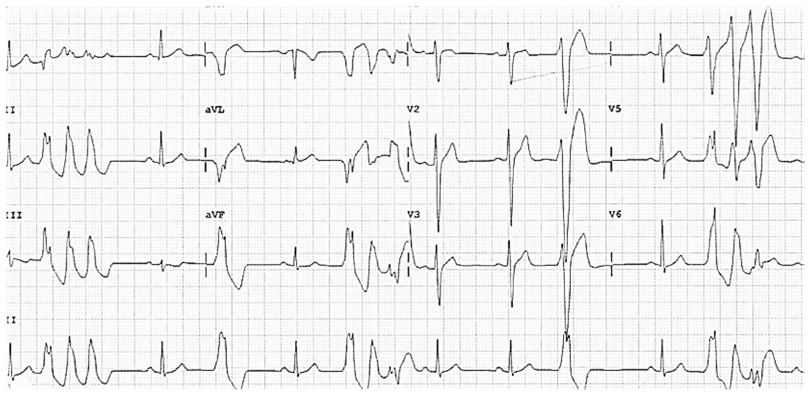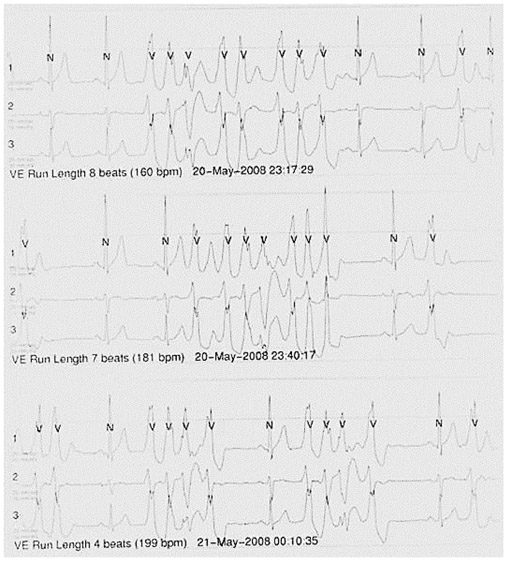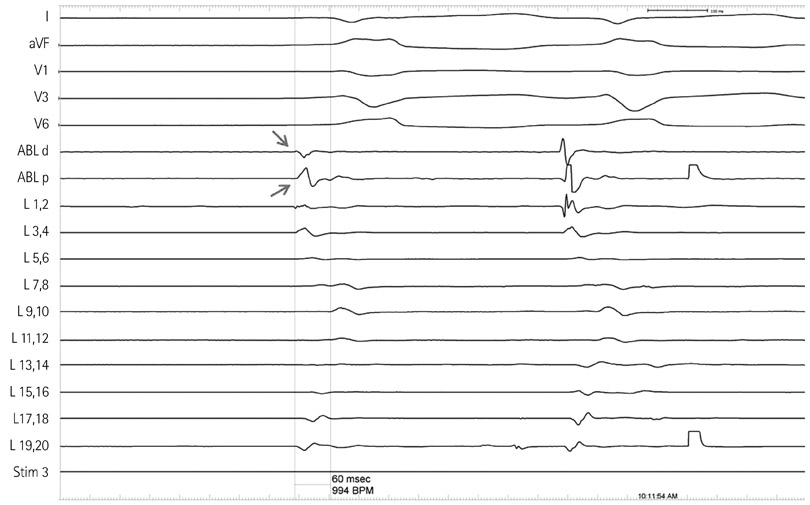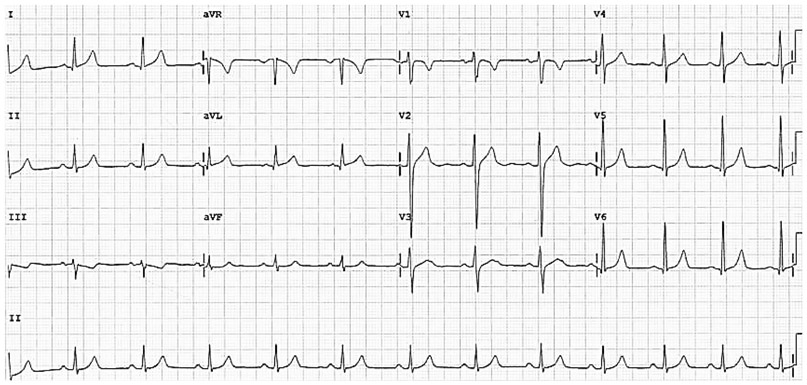Korean Circ J.
2013 Feb;43(2):119-122. 10.4070/kcj.2013.43.2.119.
Unusual Polymorphic Ventricular Tachycardia Originating from the Pulmonary Artery
- Affiliations
-
- 1Division of Cardiology, Department of Internal Medicine, Korea University College of Medicine, Seoul, Korea. cardio@medimail.co.kr
- KMID: 1769648
- DOI: http://doi.org/10.4070/kcj.2013.43.2.119
Abstract
- We report a case about a 27-year-old healthy young male who developed syncope during exercise, which was subsequently identified to be attributable to non-sustained polymorphic ventricular tachycardia (VT). Occurrence of polymorphic VT was neither related to a prolonged QT interval nor a fixed short coupling interval. Standard examinations including echocardiography, coronary angiography, isoproterenol infusion study, and cardiac MRI showed no structural heart disease. On the electrophysiology study, activation mapping revealed that a discrete potential preceded the premature ventricular complex (PVC) triggered polymorphic VT, which was recorded just above the pulmonary valve. After radiofrequency ablation at this area, PVC and polymorphic VT disappeared and did not recur after a 2 month follow up.
MeSH Terms
Figure
Reference
-
1. Viskin S, Belhassen B. Polymorphic ventricular tachyarrhythmias in the absence of organic heart disease: classification, differential diagnosis, and implications for therapy. Prog Cardiovasc Dis. 1998. 41:17–34.2. Mechleb BK, Haddadin TZ, Iskandar SB, Abboud LN, Fahrig SA. Idiopathic polymorphic ventricular tachycardia with normal QT interval in a structurally normal heart. Pacing Clin Electrophysiol. 2006. 29:791–796.3. Haïssaguerre M, Shoda M, Jaïs P, et al. Mapping and ablation of idiopathic ventricular fibrillation. Circulation. 2002. 106:962–967.4. Haïssaguerre M, Extramiana F, Hocini M, et al. Mapping and ablation of ventricular fibrillation associated with long-QT and Brugada syndromes. Circulation. 2003. 108:925–928.5. Weerasooriya R, Hsu LF, Scavée C, et al. Catheter Ablation of Ventricular Fibrillation in Structurally Normal Hearts Targeting the RVOT and Purkinje Ectopy. Herz. 2003. 28:598–606.6. Ya J, van den Hoff MJ, de Boer PA, et al. Normal development of the outflow tract in the rat. Circ Res. 1998. 82:464–472.7. Hasdemir C, Aktas S, Govsa F, et al. Demonstration of ventricular myocardial extensions into the pulmonary artery and aorta beyond the ventriculo-arterial junction. Pacing Clin Electrophysiol. 2007. 30:534–539.
- Full Text Links
- Actions
-
Cited
- CITED
-
- Close
- Share
- Similar articles
-
- Idiopathic Polymorphic Ventricular Tachycardia: a “Benign Disease†with a Touch of Bad Luck?
- A Case of Catecholaminergic Polymorphic Ventricular Tachycardia
- Thoracoscopic Left Cardiac Sympathetic Denervation for a Patient with Catecholaminergic Polymorphic Ventricular Tachycardia and Recurrent Implantable Cardioverter-Defibrillator Shocks
- A case of broad QRS paroxysmall supraventricular tachycardia that is difficult to differentiate from ventricular tachycardia
- Ventricular Tachycardia Associated Syncope in a Patient of Variant Angina without Chest Pain






